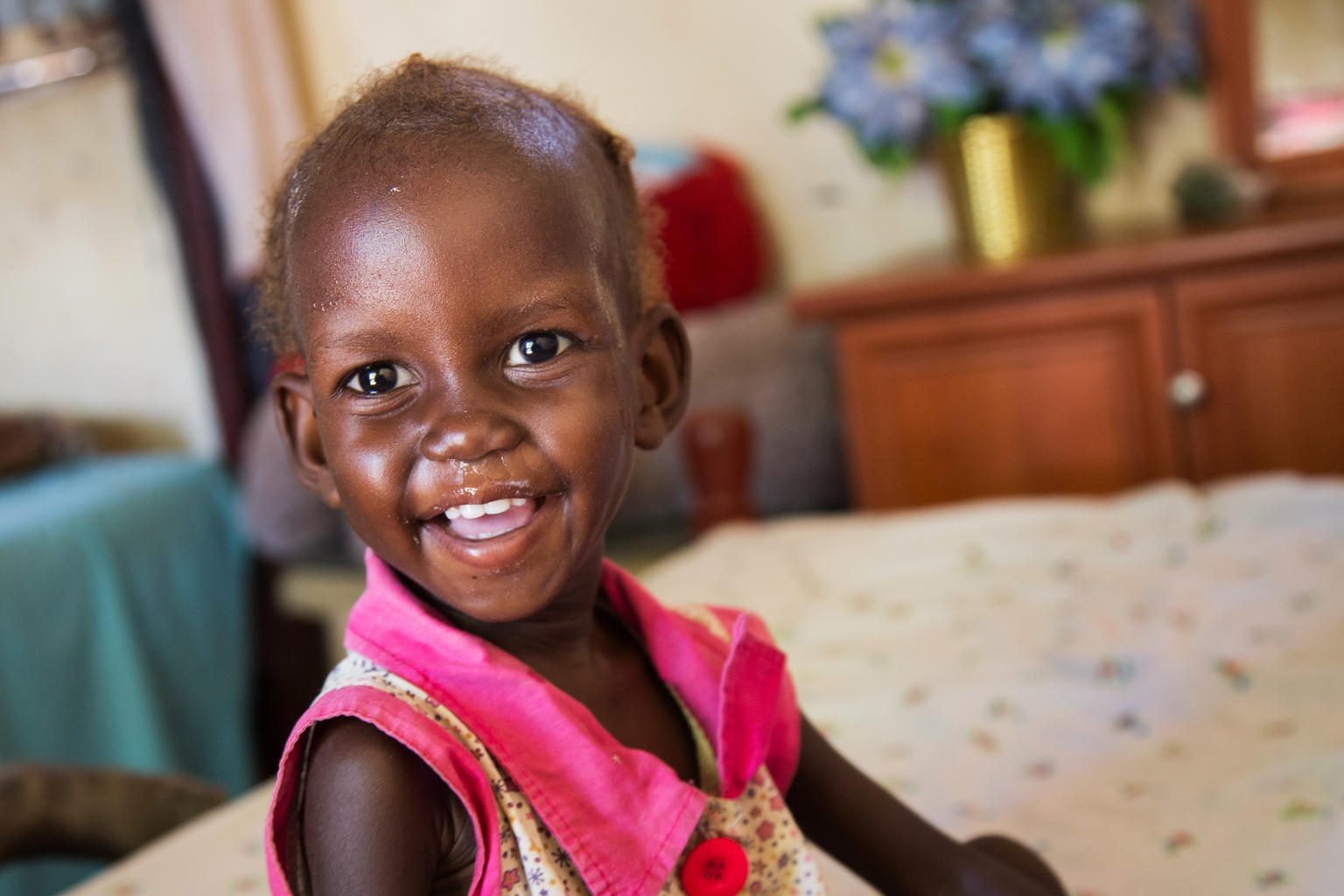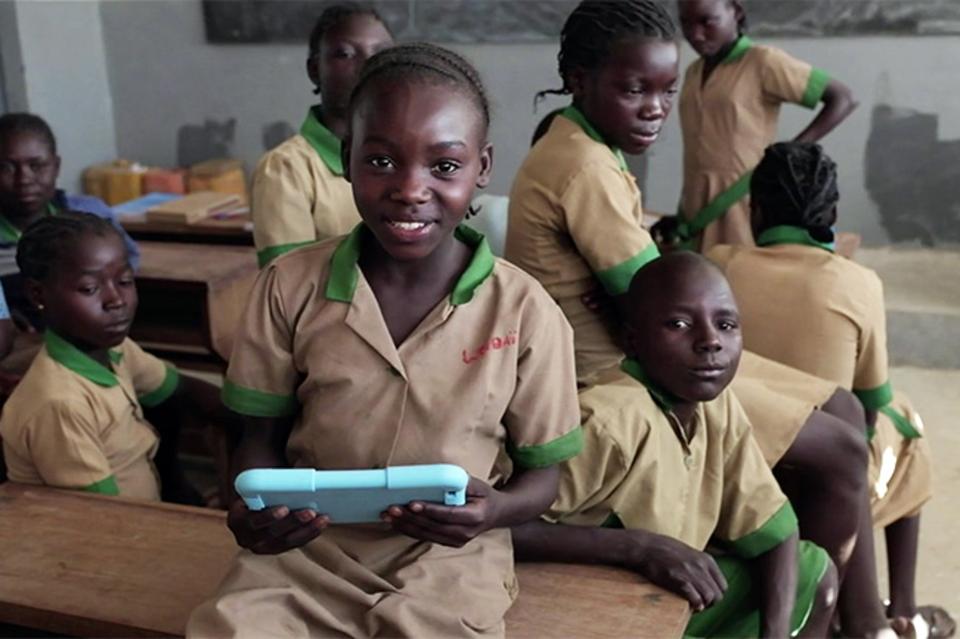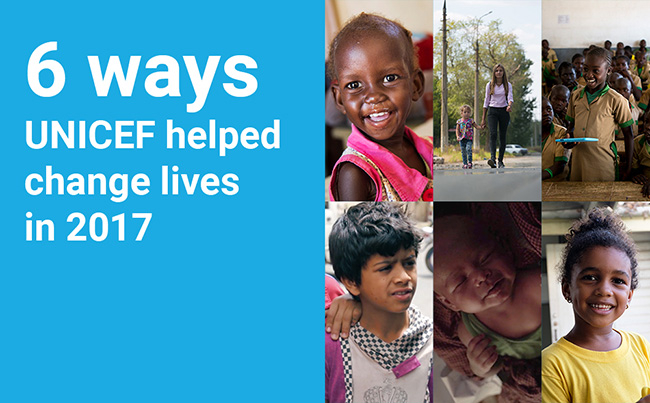聯合國兒童基金會2017年改變生命的6種方法
2018-01-17
回顧2017年的人道主義形勢,負面消息成為焦點:暴力衝突沒有任何緩和的跡象、兒童不能在安全的地方生活、自然災害奪去數百萬人的家園及生命。但在種種災難中,仍有希望之光在閃爍:女童從早婚的困境中獲救、兒童重返校園、新生兒接種能預防致命疾病的疫苗。這些事情時刻提醒我們,即使在最絕望的情況下,我們仍能與社區、家人、兒童攜手作出改變。以下是聯合國兒童基金會(UNICEF)及合作伙伴2017年改變生命的方法。

© UNICEF/UN0152308/Gonzalez Farran
瑪麗亞(Maria)漫長的康復之路
2017年2月,南蘇丹部分地區宣布陷入饑荒。儘管大規模的饑荒已有好轉,但形勢仍非常危險,預計2018年有超過100萬名兒童患上營養不良。兩歲的Maria被送進UNICEF支援的治療中心時嚴重營養不良,更有併發症。僅僅一個月後,她便完全康復。過去4年,UNICEF及合作伙伴已拯救超過60萬名兒童,Maria就是其中一個。

© UNICEF Yemen/2017/Fuad
義工與也門霍亂戰鬥
4月底,也門爆發歷來最大規模的霍亂及腹瀉疫情。由於食水及衞生設施在衝突中被破壞,疫情迅速蔓延全國,脆弱兒童的健康狀況受到威脅,他們佔一半的疑似病例和25%死亡病例。為控制疫情和防止病例增加,UNICEF支援社區自發組織教導市民飲食安全知識的義工。法蒂亞(Fathya)表示:「霍亂是非常危險的疾病,會引致死亡。我有孩子也患霍亂,所以我想做義工幫助其他人。」儘管疫情仍然嚴重,但新增的霍亂病例個案自10月已有所下降。

© UNICEF Ukraine/2017/Filippov
凱瑞娜危險的上學之路
烏克蘭東部是目前全球地雷隱患最嚴重的地區之一,威脅22萬名兒童的生命。他們生活、玩樂和上學的地方佈滿地雷、未爆炸的炮彈,及其他極度危險的戰爭遺物。凱瑞娜與家人仍在地雷接觸綫附近的地區生活。每天上學時,她都要面對受傷甚至死亡的風險。透過參加UNICEF支援的地雷風險教育宣傳活動,她學會如何安全避開這些危險。
[su_youtube_advanced https="yes" url="https://www.youtube.com/watch?v=cSlojfiV__8" width="1200" height="675"]
奧馬爾:在難民營出生2017年8月,緬甸若開邦爆發暴力衝突,超過60萬人跨越邊境逃往孟加拉,當 中6成是兒童。奧馬爾在媽媽跨境不久後在難民營出生。由於缺乏足夠及合適的食物,兩母子很快患上營養不良。UNICEF擴大治療營養不良和疾病等緊急應對工作,幫助奧馬爾和媽媽完全康復。
![On 10 September, 6-year-old Bella Rian Jackson smiles outside the National Technical Training Centre in St. John's, capital of the island of Antigua. The education facility currently shelters displaced families from Barbuda whose homes were destroyed by Hurricane Irma. Bella, from Antigua, volunteers at the shelter with her grandparents, sorting and folding donated clothes, cleaning and tidying up the communal areas, and helping to distribute food and supplies. “I wanted to volunteer with my grandma,” Bella says. “If the children can’t come here, they’d [sic] have nowhere to go, and another storm could come,” she adds. More than 130 people, including scores of children, sheltered at the centre when the facility was at its busiest. On 6 September 2017, Hurricane Irma, the strongest hurricane ever recorded in the Atlantic, pummelled islands in the Eastern Caribbean. The category 5 storm left a path of destruction – especially on Anguilla, the British Virgin Islands, Barbuda and Turks and Caicos Islands. Some 73,000 people in this area, including 20,000 children, are affected, and at least 132 schools have been damaged. Irma disrupted communication networks in many areas and damaged or destroyed infrastructure, including roads, idges, hospitals and schools. The island of Barbuda suffered extensive damage during the disaster. Over 90 per cent of its buildings were destroyed, with homes, schools, the island’s only hospital, and other infrastructure destroyed or severely damaged. A 2-year-old boy was also killed during the storm, and most of Barbuda’s nearly 2,000 residents have been displaced. Officials quickly evacuated the vast majority of the population to Antigua, Barbuda’s sister island, ahead of an anticipated category four hurricane (Hurricane Jose) expected to wreak additional destruction on the already devastated island. Antiguans have rallied to support their compatriots, with church and community groups volunteering at shelters hosting](/wp-content/uploads/4000/01/UN0120231.jpg)
兒童攜手應對颶風艾瑪帶來的破壞
2017年夏末初秋時,颶風「哈維」、「艾瑪」和「瑪麗亞」為加勒比海地區東部、海地和古巴連續帶來破壞性災難。巴布達超過9成建築損毀,大部分居民失去家園和學校後被轉移到安提瓜,當地的居民向他們伸出援手。6歲的貝拉‧里安‧傑克遜身為眾多義工之一,在收留巴布達家庭的避難所提供支援。「如果兒童不來這裏,他們就無處可去。」UNICEF在島上準備救援物資,並為受風暴影響而無家可歸的兒童提供教育活動和社交心理輔導。

© UNICEF Cameroon/2017
瓦依拜在數碼世界中茁壯成長
12歲瓦依拜在喀麥隆遠北地區生活,那裏經常被「博科聖地」組織襲擊。在目前所在的村莊定居前,她與家人被迫逃離尼日利亞的家園。現在,她在當地一間首批接觸網絡的學校上課。她說:「我還記得2017年1月第一次上網的情況。以前,我對互聯網毫無認識。」透過提供平板電腦及接觸互聯網,UNICEF「連接我的學校」計劃幫助瓦依拜和朋友學習新知識,為他們展開擁有無限機會的世界。










